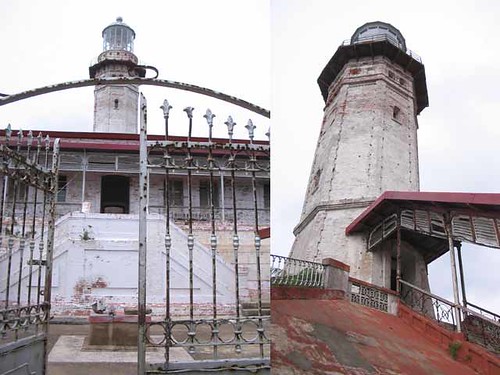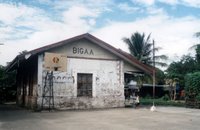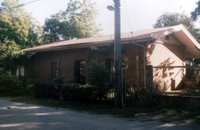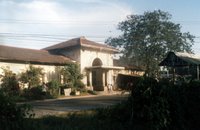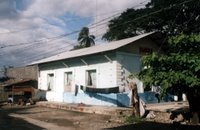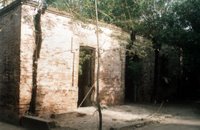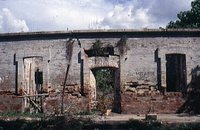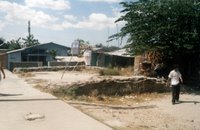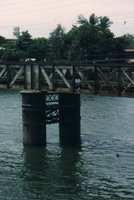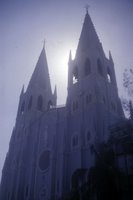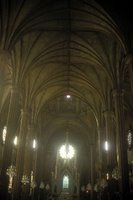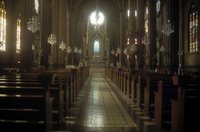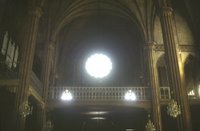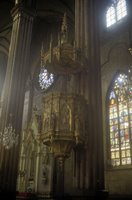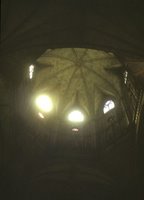by Manuel Maximo Noche Lopez Del Castillo
In the 1880’s, the Spanish Colonial government undertook massive construction frenzy. Its main goal: to protect the ever-increasing maritime trade the Philippines was then experiencing. With the end of the famed Manila-Acapulco Galleon Trade, the Philippines was opened to a wider network of international trade. This necessitated more shipping routes to and from the islands, as well as more connection between Manila and beyond. In the absence of modern satellite or radar technology, navigators at that time relied heavily on astronomy; on stars to map and chart their courses. Though medieval, this proved adequate, considering that explorers were able to find their way around the globe with nary an incident. But to further ensure the safety of the galleons – by these time coal-burning transport ships laden with precious commodities – further guides were needed to bring the ships safely into harbor or open waters. This brought about the construction of faros (lighthouses) throughout the archipelago.
Lighthouses in the Philippines are nothing new. The oldest lighthouse in the country was erected way back in the 16th century, almost at the onset of Philippine colonization. This lighthouse, located at the mouth of the Pasig, guided navigators to the banks of the river, which served as the main port of Manila, the capital of colonial Spain in the Orient. Centuries would progress with the Philippines comfortable with the wealth that the Galleon trade would bring, but not a single lighthouse except for the one located in the mouth of the Pasig as well as fires lit on top of Corrigedor Island was built
By the 19th century, towards the end of Spanish colonization, the Spanish Colonial Government undertook a massive lighting of our seas. The Plan General de Alumbrado de Maritimo de las costas del Archipelago de Filipino or the “Masterplan for the lighting of the Maritime Coasts of the Philippine Archipelago” was undertaken by the Inteligencia del Cuerpo de Ingenieros de Caminos, Canales y Puertos or the “Corp of Engineers for Roads, Canals and Ports. The task to light the seas and channels of the country to guide ships in and through the most important sea channels to the Ports of Manila, Ilo-ilo and Cebu. This plan, which was drafted in 1857, was immediately set into action with the preparation and eventual construction of roughly 70 lighthouses allover the archipelago. Of these 22 are of major construction works while the rest were of lower classification lights.
Spanish Engineers were tasked in the preparation and supervision of these lighthouses. Engineers such as Guillermo Brockman, Magin Pers, Eduardo Lopez Navarro, Ramon Ros, Enrique Trompet Vinci, Alejandro Olano designed structures that were functional, comfortable and beautiful as well. These structures located in the most beautiful and spectacular sites, lonely isolated islets, cliffs, barren rock outcrops, bluffs, capes and points, are testament to the commitment the Spanish Colonial government had on the Philippines to modernize it and make it competitive at the dawn of the 19th century.
Designed in the prevailing renaissance revival style as well as the Victorian Style of Architecture, these structures, composed of tower, pavilion and service buildings were built to house the lights as well as the keepers who would man them. The tower, the most significant part of any lighthouse was made strong and tall to ensure visibility at any given condition. The pavilion on the other hand was designed to accommodate the lighthouse keeper and his family whose role it was to ensure that the lights were lit every evening and that the prisms or Fresnel Lens are rotating. Two service buildings, usually flanking a grilled courtyard would contain kitchens and almacenes or storage rooms for the combustible materials that were used to light the tower. An outhouse situated a few meters away from the complex served the toilet needs of the keepers.
Different towers were designed by the Corp of Engineers. The most significant are those made of masonry of either brick or stone. Of the lighthouses visited during the course of this research, 13 towers were built of masonry. Faro de Cabo Engaño, Isla Palaui, Santa Ana, Cagayan, Faro de Cabo Bojeador, Burgos, Ilocos Norte, Faro de Punta Capones, Islote de Capon Grande, San Antonio, Zambales, Faro de la Isla de Cabra, Lubang, Mindoro Occidental, Faro de Rio de Pasig, Binondo, Manila, Faro de Isla Corrigedor, Cavite, Faro de Punta Malabrigo, Lobo, Batangas, Faro de Cabo Santiago, Calatagan, Batangas, Faro de Islote de San Bernardino, Bulusan, Sorsogon, Faro de Punta Bugui, Aroroy, Masbate, Faro de Isla Gintotolo, Balud, Masbate, Faro de Cabo Melville, Isla Balabac, Palawan, and Faro de Punta Capul, Capul, Samar del Norte. Towers of metal were also fabricated, these towers known as Tourelle, were made and manufactured in France and would easily be assembled on site. Such towers are found still standing at Luz del Puerto de San Fernando, San Fernando, la Union, Luz de Isla Bagatao, Magallanes, Sorsogon, Faro de Islote de Siete Pecades, Dumangas, Ilo-ilo and Faro de Punta Luzaran, Nueva Valencia, Guimaras. Though the towers of Faro de Islote de Manigonigo, Carles, Ilo-ilo, Faro de Sibulac-Babac de Gigantes, Estancia, Ilo-ilo, and Faro de Isla Calabazas, Ajuy, Ilo-ilo have been replaced with modern aluminum towers and lights, they originally contained metal Tourelle towers. Metal towers too were used for Faro de Islote de Tanguingui, Bantanyan, Cebu, and Faro de Islote de Capitancillo Tobogon, Cebu, supported by metal framework, these towers were able to rise taller than the Tourelle, which had a standard height of 6 meters.
The main pavilion of the Lighthouse, which is elevated from about a meter to over 3 meters above ground is used primarily as an office for the assigned engineers as well as living quarters for the lighthouse keepers and their families. For 1st, 2nd, 3rd, and even to some extent 6th order light stations, complete dwelling facilities are provided for. Though those, which are within easy access to communities, are provided only with the most basic of shelters, as surmised in the Luz del Puerto de San Fernando, and Luz de Isla Bagatao. Both being 6th orders stations, its original quarters were of light materials, only during the American Commonwealth Period were permanent quarters built. The pavilions were built of the same materials as the tower, either locally sourced granite or locally made bricks. Hard wood, such as Molave, Tindalo, and Narra was used for the beams, joists, trusses, floors, nailers, doors and windowsills. Walls were plastered and painted with some examples stenciled with interesting patterns. Marble, clay tiles or plain cement finishes were used for the verandah. Decorative Metal Grilles surround the fence, balconies as well as the bottom level of windows. Corrugated iron sheets cover the roof. Most 1st to 3rd order lighthouses are equipped from 2 to 4 quarters, with each quarter provided its own receiving area. An office for the on-duty engineer is also provided. This office which normally has a view of the sea, is also used as the lighthouses’ watch room. In most cases, this watch room is accessible to the tower. A hallway, which bisects the pavilion in two, is commonly provided for. This enables the engineers and keepers easy access from their rooms to any part of the building. A verandah is situated either in front or at the rear of the building. For Faro de Islote de San Bernardino, Faro de Punta Malabrigo, Faro de Punta Bugui, Faro de Isla Gintotolo and the Faro de Punta Capul, a surrounding verandah is provided. Finally basic furnishing such as, camas, escritorios, mesas, sillas, armarios, and estantes are provided
Today, these lighthouses built by the Corp of Engineers of the Spanish Colonial Government over 100 years ago are in various states of disrepair or ruin. Some are in admirable condition such as those of Faro de Cabo Bojeador, Faro de Punta Malabrigo, Faro de Cabo Santiago, Faro de Isla Gintotolo, Faro de Siete Pecados, Faro de Cabo Melville (which still retains its original 1st order Fresnel Lens and could be made operational again with minor repair work), and Faro de Isla Corrigedor, which was restored by the Cooperacion Español, while others are in need of immediate attention, such as Faro de Punta Capones, Faro de Sibulac-Babac de Gigantes, Faro de Isla Cabra, Faro de Islote de San Bernardino, Faro de Punta Capul, and Faro de Punta Bugui (with its 3rd order lens still intact). Though some are still repairable, there are a few which are today sadly in total ruin. Lighthouses such as those in Cabo Engaño, Islote de Tanguingui, Islote de Capitancillo, Punta Luzaran, Islote de Manigonigo, and Islas Calabazas are in total ruin and would need massive amounts to restore and made habitable again.
But what is the point of restoring, when these lighthouses do not function the way they did a hundred years ago. True, these lighthouses are still needed to light our seas. The tower receives numerous funding for its modernization and upkeep, with most towers retrofitted with modern solar light, thus necessitating the removal of historic bronze cupolas and its inch thick Fresnel Lens. With the towers automated, the need for lighthouse keepers to man such structures is obsolete. Today, lighthouse keepers have an easier task, visiting towers only once in a while to replace busted bulbs and to do minor maintenance work. But with funds scarce, the damages wrought by over 100 years is too daunting.
The Spanish Colonial Lighthouses built over 100 years ago still serves its master well. Guiding ships to their ports of call, these structures, stripped of their dignity still stands proud in their lonely windswept location. Yet even with time and the elements acting against them, the beauty that the Spanish Engineers erected on our soil cannot be erased. It is time that we, the inheritors of this patrimony should do what we can to ensure its survival for the next 100 years. For these lights not only lit the souls and imaginations of those who chanced upon them they also guided a nation to progress.
The essay is based on a report conducted by the author on Spanish Colonial Lighthouses in the Philippines through a grant received in 1998 from the Ministry of Education and Culture of Spain “Towards a Common Future” and the Center for Intercultural Studies, The University of Santo Tomas. Throughout the study, from 1998 to the present 24 Spanish Colonial Lighthouses all over the country were visited and studied. A detailed assessment of their conditions was conducted and recommendations made to the Coast Guard of the Philippines for their eventual restoration.
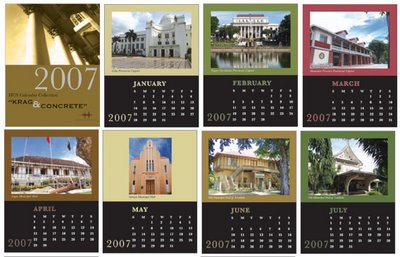
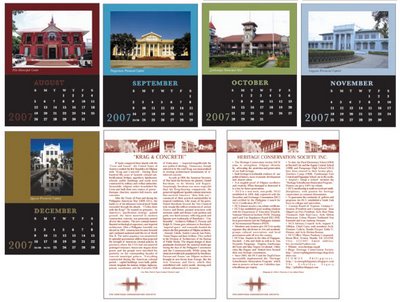 The 2007 HCS Calendar featuring heritage provincial capitols, city halls and municipios, is now on sale. For more information, contact:
The 2007 HCS Calendar featuring heritage provincial capitols, city halls and municipios, is now on sale. For more information, contact:

